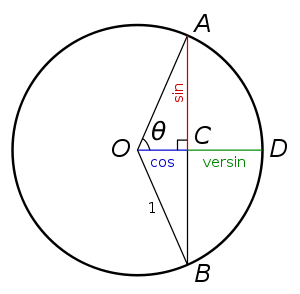
Hallade method
Encyclopedia

Rail transport
Rail transport is a means of conveyance of passengers and goods by way of wheeled vehicles running on rail tracks. In contrast to road transport, where vehicles merely run on a prepared surface, rail vehicles are also directionally guided by the tracks they run on...
track.
It involves measuring the offset of a string line from the outside of a curve at the central point of a chord
Chord (geometry)
A chord of a circle is a geometric line segment whose endpoints both lie on the circumference of the circle.A secant or a secant line is the line extension of a chord. More generally, a chord is a line segment joining two points on any curve, such as but not limited to an ellipse...
. A standard chord length is used: in the UK this is conventionally one chain, i.e. 22 yards. Half chords, i.e. half a chain intervals, are marked on the datum rail using chalk. The string, which is one chain long, is then held taut with one end on two marks at each end of a chord, and the offset at the half chord mark measured. The versine
Versine
The versine or versed sine, versin, is a trigonometric function equal to and 2sin2. It appeared in some of the earliest trigonometric tables and was once widespread, but it is now little-used...
of the chord, which is equal to this measured offset value can be calculated using the approximation of:

which is:

where
v = versine (mm)
L = chord length (m)
r = radius of curve (m)
By comparing the surveyed versine figures to the design versines, this can then be used to determine what slues should be applied to the track in order to make the curve correctly aligned. This is often done using pegs which are driven into the ground in the cess beside the track to be aligned. The process of putting the pegs in the correct positions is known as 'setting out'.
If the curve needs to be of a desired constant radius, which will usually be determined by physical obstructions and the degree of cant which is permitted, the versine can be calculated for the desired radius using this approximation. In practice, many track curves are transition curves and so have changing radii. In order to maintain a smooth transition, the differences in versines between consecutive half chords are measured and minimised.
This can be done manually, and this method is still used in the UK railway. However, due to the complexity of the calculations over long lengths of track, it is now often done computationally, with the data being loaded straight onto a computer controlled tamping and lining machine
Ballast tamper
A ballast tamper or tamping machine is a machine used to pack the track ballast under railway tracks to make the tracks more durable. Prior to the introduction of mechanical tampers, this task was done by manual labour with the help of beaters...
for implementation.

